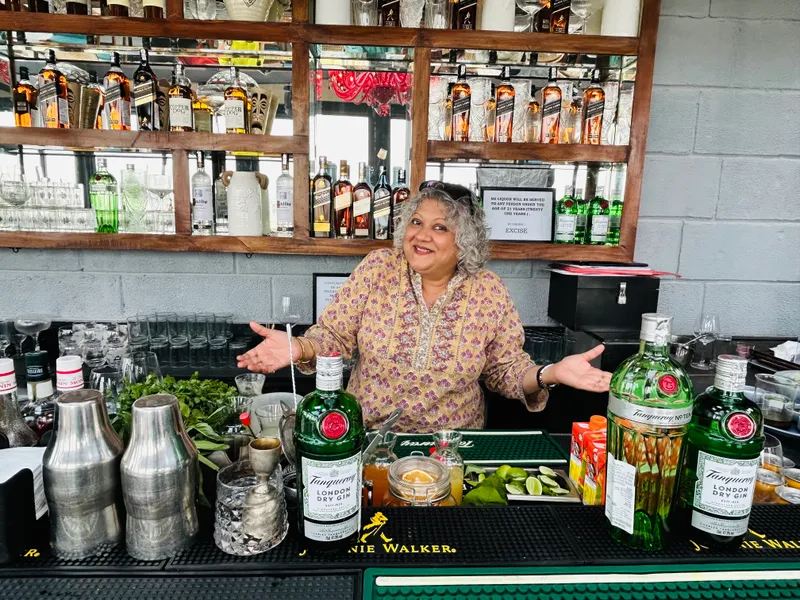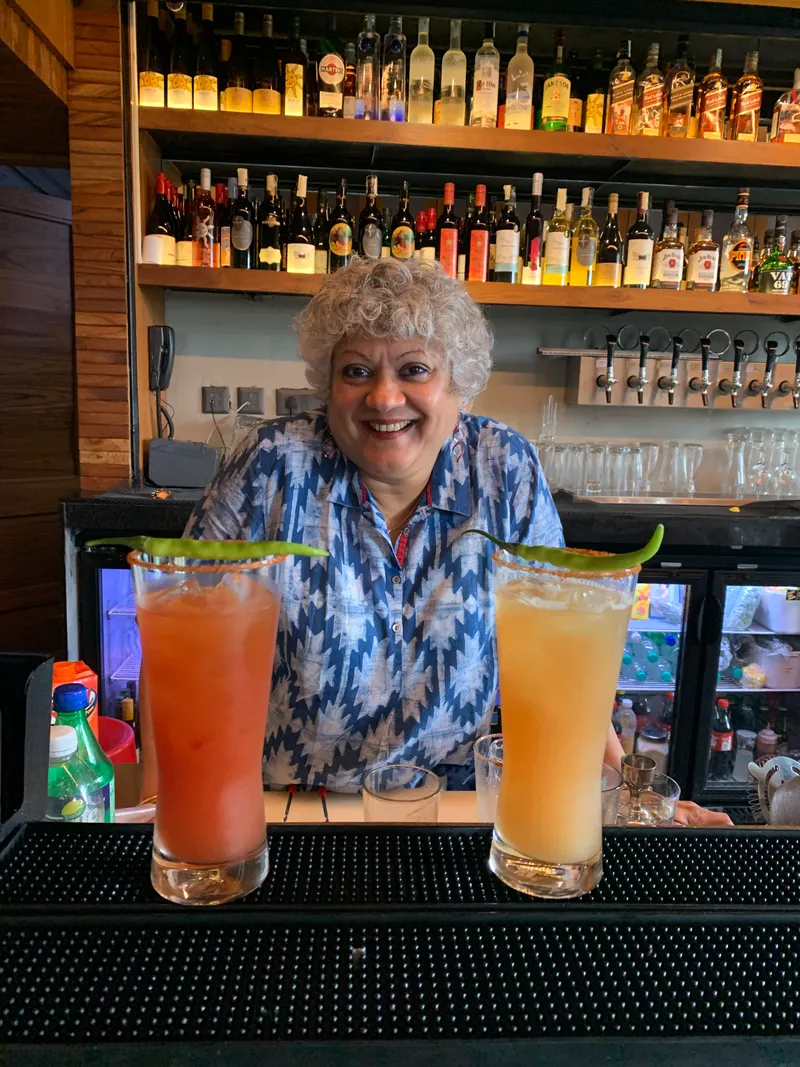Luck by martini: How Shatbhi Basu broke the glass ceiling in India’s bar industry
Shatbhi Basu never intended to become a bartender, but life had other plans. Four decades later, Basu is recognised as one of the pioneers in the bar industry.
Shatbhi Basu likes to call herself an “accidental bartender.”
“The aim was not to be India’s first female bartender at all. Or to break barriers. It just happened,” says Basu, who can light up a room with her bright smile, often with a glass of whiskey in hand.
Over the last few decades, Basu has strived to improve the standards of bartending in India—whether as a bartender herself, teacher, author, consultant, content advisor, or host of a TV show—creating a pipeline of skilled bartenders in the country’s evolving bar industry. Now pegged at $17.54 billion today, India’s cafes and bars industry in the 1980s “barely had any male bartenders, and probably no women,” Basu tells YS Life.
In 1981, after graduating from the Institute of Hotel Management, Mumbai, Basu kick-started her career in a standalone Chinese restaurant, Chopsticks, at Mumbai’s Linking Road. “My focus had always been the kitchen…,” Basu says, who was initially asked to be the floor supervisor at the restaurant.

Shatbhi Basu behind the bar
Every gin has a story and a unique persona, says Anthem founder Anjali Batra
Her manager and a senior from college, Shridhar Modak, put Basu in charge of the bar. Her job was to take and execute all cocktail orders, and almost immediately in her new role, Basu was asked to make a dry martini. “That terrified me as I knew them only theoretically…and the bar only had gin, no dry vermouth!”
“Thankfully, I had paid attention in class and remembered what it was. It allowed me to adapt to white wine and a touch of a bitter aperitif…The guest liked it and asked me for a second!” she recalls.
The incident brought out her curiosity and she went back to Trader Vic’s Bartender’s Guide, a gift from her mother and aunt, and studied every page.
And the rest is history.
Basu has been awarded two Lifetime Achievement awards, including from the Ministry of Tourism, Government of India. In 2018, she was recognised by the President of India and the Ministry of Women and Child Development for her contribution to the beverage industry.
At present, Basu is the head of Mumbai’s STIR Academy of Bartending—the very first institution for professional bartending in the country. She has consulted over 50 institutions as well as multiple brands and MNCs; was appointed as the first American Whiskey Ambassador for India from 2013 to 2016; and hosted the NDTV Good Times show ‘In High Spirits’.
On the sidelines of Godrej Food Trends Report 2024 launch, YS Life caught up with Basu to get a peek into her journey so far. Basu also shares important trends from the alco-bev industry.
Edited excerpts from the conversation:
YS Life [YSL]: How would you describe yourself in three words?
Shatbhi Basu [SB]: Passionate, determined, patient—these words reflect my journey and the essence of my career in bartending.
YSL: Once you found yourself behind the bar, did you ever have second thoughts?
SB: I never had second thoughts once I embraced bartending. There was some scepticism and resistance initially from my teammates. This was in 1984 at Hotel Sands in Juhu—a brand-new business hotel at the time.
I was Assistant Food & Beverage Manager along with special charge of the bar. I was also in charge of training as part of the pre-opening. The bar team therefore knew I had knowledge [of bartending] but they were wary of me. When they saw how quick I was, and that I didn’t expect them to pick up the heavy lifting for me, they warmed up to me.

YSL: How challenging was it for a woman to break into a predominantly male-dominated industry?
SB: I grew up in an equal-opportunity home, so the thought of male-female divide was non-existent. That probably helped me more. The challenges were more practical— for instance, the lack of tools and ingredients. I turned these challenges into opportunities to prove myself and pave the way for other women in the industry.
YSL: What was it like to be recognised by the President of India?
SB: It was an incredible honour. It validated the hard work and dedication I had put into my career and highlighted the significance of breaking barriers for women in unconventional professions.
YSL: Since starting your journey, how have things changed for aspiring bartenders, especially for women?
SB: The landscape has changed significantly. There are now more opportunities, training programmes, and acceptance for women in bartending. The industry has become more inclusive, with many women making their mark and achieving success.
YSL: You founded STIR Academy of Bartending in 1997 at a time when bartending was not as mainstream in India. What was your mission?
SB: It was 1997, and marked 50 years of Indian independence. I was shocked to realise that bartending was still not mainstream and there wasn’t a single professional course that taught these skills in India. I founded STIR Academy to provide structured training and elevate the standards of bartending in India. It aimed to professionalise the field and create a pipeline of skilled bartenders. The alumni have made me proud, not only in India but outside the country too.
YSL: How has the bartending industry evolved over the years? Which trends have dominated the industry?
SB: The bartending industry has evolved with a focus on craft cocktails, sustainability, and local ingredients. Trends like molecular mixology, artisanal spirits, and the revival of classic cocktails have dominated the last decade.
The year 2024 is especially exciting as passionate individuals drive innovation and growth, emphasising quality over quantity. While gin and whiskies remain favourites; tequila, mescal, and rum are emerging as the next big trend, along with coffee-based liqueurs and flavoured spirits.
We can expect continued innovation in all aspects of cocktails, from glassware and specialty ice to mixers and unique ingredient pairings.
YSL: After the gin revolution in India, we are noticing enthusiasm over tequila and spiced rum. What are your thoughts?
SB: The enthusiasm for tequila and spiced rum is exciting and reflects the evolving preferences of consumers.
Tequila has been popular for a long time. The difference today is the evolution of the consumer who is now looking at upping the game with 100% agave, aged craft tequila and individualistic mescals. These are expensive and distinctive sipping drinks and this preference speaks volumes for the maturity and growth of our market.
YSL: Are drinkers becoming more inclined towards crafted cocktail experiences?
SB: I believe this trend towards crafted cocktail experiences is a wonderful development. Local ingredients and unique techniques not only add a distinct character to cocktails but also celebrate regional flavours and sustainability. They allow bartenders to be more creative and connect with their cultural roots. This approach enriches the drinking experience and highlights the importance of supporting local producers and sustainable practices.
YSL: With celebrity mixologists creating noise across geographies, do you think the competition for newcomers has become all the more intense?
SB: I don’t think so. It’s not about competition; it is about motivation and inspiration for newcomers and it helps raise the bar for quality and innovation. It pushes them to get more skilled, up their game, and get creative to stand out. It’s an exciting time for the industry as it pushes everyone to bring their best to the table.
YSL: Has your go-to drink changed over the years?
SB: My go-to drink keeps evolving with my experiences. My current favourite is a well-crafted Picante or a Negroni using dry vermouth instead of sweet. Though to be absolutely honest, I usually stick with a glass of wine or a good whisky!
YSL: What’s next on your plate?
SB: I’m not sure yet but ‘reinvent’ has always been the name of my game! That is what allowed me to be multifaceted and taught me to use my knowledge and skills far beyond just bartending. That’s the direction I will continue to take and look for opportunities and collaborations that challenge and excite me.
(The article was updated to include the launch of Godrej Food Trends Report 2024.)
Edited by Kanishk Singh











